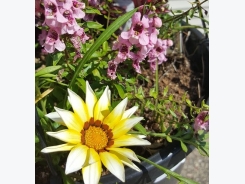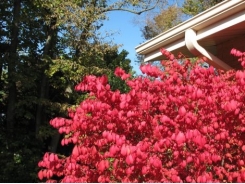Growing Blazing Star (Liatris) Flowers: A How To Guide

Learn more about growing and adding blazing star to the garden.
Garden designers often recommend planting a combination of plants for the most pleasing effect in the garden. They suggest, for example, combining rounded plant forms, such as catmint or daylily with upright, vertical growers. One such plant is blazing star, also known as Gayfeather (Liatris). Hardier than delphiniums or foxglove, blazing star is a low-maintenance choice for vertical height in the perennial garden. This plant, native to the eastern and southern U.S. produces pink or purple fuzzy spikes of flowers atop grass-like leaves. The flower spikes range from 2 to 5 feet high.
Blazing star is hardy in USDA plant hardiness zones 4 through 9. Historically, the plant was sometimes called colic root, because it was used by Native Americans and early settlers to relieve indigestion. It looks best in a casual perennial bed. Combine it with other tough perennials and annuals, such as daylilies, black-eyed Susans, coreopsis, lamb’s ear and Echinacea. Another advantage of Blazing Star is its bloom time. Blazing star blooms from mid-summer to fall, when many other perennials are fading.
Growing Conditions for Blazing Star Flowers
Blazing star is an easy perennial to grow, but it must have full sun. In shade, it doesn’t bloom well and it is more susceptible to disease. Give it well-drained, light soil. It’s not particular about pH level, as long as the soil drains well. Blazing Star grows from corms or tuberous roots and it doesn’t tolerate wet feet.
Sow Blazing Star from seed in the fall in warm climates or in early spring. They need 45 days to germinate and grow best when exposed to cold for 2 to 3 months prior to warm weather. Plants grown from seed will not bloom the first year. Keep the soil moist to the touch. Alternatively, you can plant potted nursery plants in late spring. Plant Blazing Star 2 to 3 feet apart. The plant spreads slowly, but eventually becomes 3 to 5 feet wide. One plant is usually enough for most garden spaces. Blazing Star self-sows and also spreads through underground roots. Divide it every 2 to 3 years as growth slows and the plant becomes crowded.
Blazing Star prefers slightly moist to dry conditions. In moist soils, it grows more quickly and blooms more prolifically. However, once established it tolerates drought conditions, along with poor soil. Fertilize Blazing Star in the spring if growth is slow. In rich soils, it may not need any fertilizer at all. Fertilize it with an all-purpose fertilizer, according to package directions.
Blazing Star Pests and Diseases
Blazing Star, like many native plants, is resistant to deer. This doesn’t necessarily guarantee that deer won’t eat it, but it certainly increases the odds that they’ll leave it alone. If deer are a problem, plant it with other deer-resistant perennials, such as Shasta daisy, purple coneflower or Russian sage.
Blazing Star is generally trouble-free, but it does have a few potential pests. In hot, humid conditions, you may notice leaf spot or rust. Leaf spot, as the name implies, causes blackened, brown or yellow spots on the leaves. Rust causes orange or red spots, which spread. Another common problem is powdery mildew, which causes a white film to form on the leaves.
To prevent these diseases, plant Blazing Star at least 12 inches apart so air circulates freely. Divide the plant when it becomes crowded. Water with soaker hoses or drip systems instead of overhead sprinklers. Don’t work in the garden while it’s wet because wet leaves spread disease. Rake up and discard any diseased leaves and cut the plant back in the fall so diseases don’t overwinter. If diseases are severe, spray with a fungicide labeled to treat the specific problem.
Blazing Star Varieties
Blazing Star comes in several varieties. Spike Gayfeather (Liatris spicata) is typically smaller than other cultivars, growing to about 2 to 3 feet high. ‘Kobold’ is another compact variety, growing only 18 inches high. ‘Floristan Violett’ has strong stems and deep purple flowers. It is often used by florists in floral arrangements. ‘Alba’ is an unusual variety with flower plumes of pure white.
Related news
Tools

Phối trộn thức ăn chăn nuôi

Pha dung dịch thủy canh

Định mức cho tôm ăn

Phối trộn phân bón NPK

Xác định tỷ lệ tôm sống

Chuyển đổi đơn vị phân bón

Xác định công suất sục khí

Chuyển đổi đơn vị tôm

Tính diện tích nhà kính

Tính thể tích ao









 How to Grow Foxglove (Digitalis)
How to Grow Foxglove (Digitalis)  Secrets of Successful Container Gardening
Secrets of Successful Container Gardening